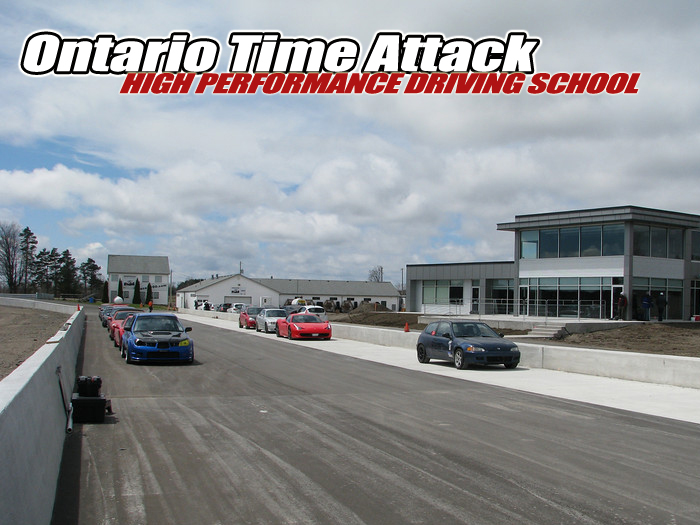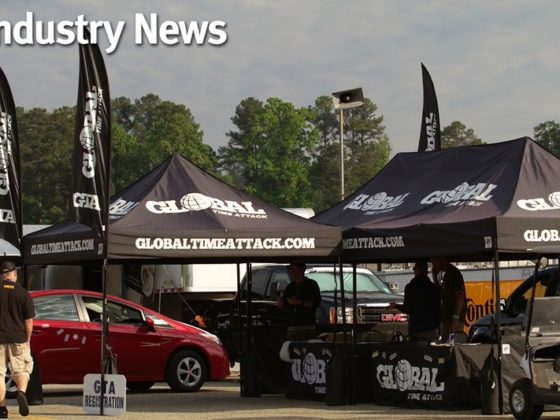,

Getting out onto the track for the first session of the day most instructors had no problem keeping the speed low because the track was drenched and wipers were on as the rain was still falling. Driving slow on a race track may seem like a contradiction of terms, but the only way to drive fast is truly to first drive slow. We did skip the annual track walk because we didn't want everyone to get the flu or frostbite. Instructors took the students around the track at a slow pace to show the line. Then the student drove, with the instructor pointing out reference points and life saving items like the marshal stations and locations. With three groups of 12 that meant that none of the stations – track, classroom, and combined skid pad/auto slalom – were crowded. Breaks were built in through the morning and afternoon, lunch was provided, and water was readily available.
 Falling rain, wipers on, standing water in puddles, meant that the drivers were all taking extra care as they explored this new track. It didn't matter if you were in a Honda or a Ferrari – no one was allowed to pass the first morning of the school.
Falling rain, wipers on, standing water in puddles, meant that the drivers were all taking extra care as they explored this new track. It didn't matter if you were in a Honda or a Ferrari – no one was allowed to pass the first morning of the school.A crew of volunteers kept the auto slalom cones set in place plus changed it up slightly after all three groups had completed the course. The intent here was to ensure that the students consistently had their eyes up and were looking ahead. It was really more of a vision exercise than a slalom course, but how many students would want to go to a vision station? And with the constant rainfall there was no need to worry about wetting the skid pad. It was flooded courtesy of Mother Nature. Drivers would do a few laps of the skid pad, run the slalom/vision course, and then return to the skid pad.
 Our volunteers needed a warm round of applause at the end of the weekend, because they were outside in miserable conditions.
Our volunteers needed a warm round of applause at the end of the weekend, because they were outside in miserable conditions.Sometimes this was the station where the car’s owner’s manual was dug out and there was a frantic search for the button combination to disable the vehicle's driver stability control systems. That is something you will want to research before you head to the track. Electronic nannies may help you on the street, they may be beneficial on the track, but they may prove to be quite a hindrance. For example, on my 2004 Mazda RX8 when the nannies kick in I lose a lot of control so I want them off. (Note to my wife: This is just hypothetical. I have never had the RX8 on a race track.) Lots of understeer and sometimes some pretty impressive oversteer was evident. And sometimes some very green looking students and instructors. If an instructor only had one student, they would follow them through this station; if the instructor had two students there were a couple of instructors with an iron constitution who stayed all day to help others achieve as close as they could to that perfect Tokyo Drift.
 You may not see a pick-up truck out at a performance school often, unless it is Mark Bovey’s 71 GMC. You can tell from the stance of this truck that it is unique. Under the hood is an LSX based 427 ci motor. He’s aiming to be the first truck in Targa Newfoundland.
You may not see a pick-up truck out at a performance school often, unless it is Mark Bovey’s 71 GMC. You can tell from the stance of this truck that it is unique. Under the hood is an LSX based 427 ci motor. He’s aiming to be the first truck in Targa Newfoundland.


